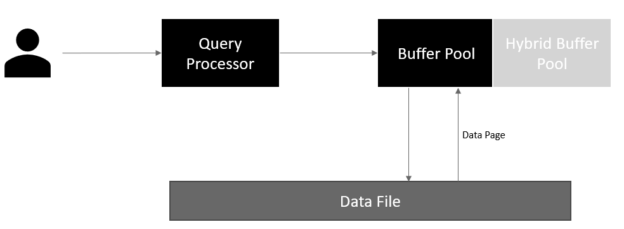This article explores the Hybrid Buffer Pool feature available in the SQL Server 2019.
Read more »



This article explores the Hybrid Buffer Pool feature available in the SQL Server 2019.
Read more »

SQL Server retrieves data from two areas; memory and disk. As disk operations are more expensive in terms of IO which means they are much slower SQL stores and retrieves data pages from an area known as the Buffer Pool where operations are much faster.
Read more »

The following article applies to SQL Server versions 2008 +
Adequate memory is one of the most important factors for a well-functioning instance of SQL Server. By design SQL Server manages its own memory allocations via the SQLOS rather than having the servers Operating System perform this task.
Read more »
When we talk about memory usage in SQL Server, we are often referring to the buffer cache. This is an important part of SQL Server’s architecture and is responsible for the ability to query frequently accessed data extremely fast. Knowing how the buffer cache works will allow us to properly allocate memory in SQL Server, gauge accurately how databases are accessing data, and ensure that there are not inefficiencies in our code that cause excessive data to be cached.
Read more »
You already understand the benefits of the BPE and how to deal with the feature, now it’s time to better understand how it works.
Here we are, the last article of this Buffer Pool Extension series. We came from the explanation of what is the Buffer Pool, made an introduction of the new In-Memory technology and saw on what the Buffer Pool Extension can help in keep a stable environment, and finally, the part 3 showed how to implement the Buffer Pool Extension in your SQL Server 2014 system.
Read more »
This third part of the BPE series shows the basics of Buffer Pool Extension and know how to implement and troubleshoot it.
During all the Buffer Pool Extension (BPE) series we have been explaining base concepts related to this new technology, as well as its benefits. We understood how the Buffer Pool works and the main benefits of implement the Buffer Pool Extension together with In-Memory technology. I recommend you to read the previous articles, if you are not familiarized with those concepts, so everything into this article will make more sense 🙂
Read more »
In continuation of the previous post “Buffer Pool Extension (BPE) – Introduction to the Buffer Pool”, we will keep diving into the Buffer Pool Extension, this time, talking about another important factor behind this feature – the memory. No, we will not review how the memory works literally, we are talking about the great SQL Server 2014 new feature: The In-Memory OLTP, or the known HEKATON.
Read more »
Introduced on SQL Server 2014, the Buffer Pool Extension came to build up a new layer of cache, helping to maintain the “hot” pages accessible with less effort. With the introduction of Hekaton, the BPE has also an important role. In this article we will explore all the aspects of this new feature as well as understand how it works.
With the release of SQL Server 2014, earlier this year, some new features were released, with a special remark to the In-memory OLTP (Hekaton). Together with that new feature, new challenges were brought. The available memory is, of course, one of the main challenges. More ahead, we will understand better why.
Read more »
In SQL Server performance metrics – part 3, we presented some of the SQL Server Buffer Manager metrics. As the SQL Server buffer pool manages data cache, it’s important to monitor various buffer pool metrics as they help identify and solve memory pressure issues
In this article, we will present 2 more Buffer Manager counters – Buffer Cache Hit Ratio and Page Life Expectancy.
Read more »© Quest Software Inc. ALL RIGHTS RESERVED. | GDPR | Terms of Use | Privacy